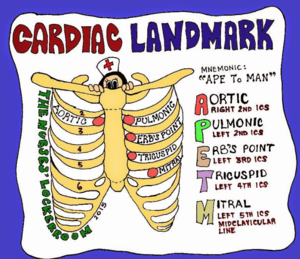14101755
HPA - PE
Resource summary
| Question | Answer |
| What is PE? | A medical emergency in which an embolus occludes a pulmonary blood vessel |
| Prevalence | 12500 people hospitalised for PE in Aus in 2012 - 2013 |
| Risk factors | Virchow's triad (sluggish venous return, abnormal coagulation, vessel wall damage) Advancing age Surgery Hip/femur fracture Immobilisation MI/CHF Obesity Pregnant women/women on HRT or contraceptives |
| Causes | Generally caused by thrombi forming proximal to the popliteal or iliofemoral veins that break off to become emboli and travel up to the pulmonary arteries and occlude blood flow |
| Pathophysiology | Thrombi often appear proximally to the popliteal and iliofemoral veins. -> these can break loose and become an embolus. The embolus then moves freely until it reaches the pulmonary arterial system. The impact of the PE depends on the extent of blood flow obstruction. -Occlusion of a large pulmonary artery will result in sudden death. Gas exchange is so significantly reduced and cardiac output falls dramatically. -Lung tissue infarction may occur due to occlusion of significant portion of pulmonary blood flow. -Obstruction of a small segment of pulmonary circulation with no permanent injury. -Chronic or recurrent small emboli with recurring symptoms. |
| Symptoms | (depend on the size and location) Dyspnoea Pleuritic chest pain Anxiety - sense of impending doom Cough - can be haemoptysis Sweating & clammy skin (less common) |
| What might the nurse hear/notice on resp/cardiac examination? | Resp: crackles (rales) heard on auscultation. Person may appear cyanotic in severe cases Cardiac: may hear S3/S4 gallop in severe cases |
| Vitals | RR: tachypneic HR: tachycardic BP: can be normal/ low in severe cases SpO2: may be reduced in severe occlusion Temp: may be febrile |
| Relevant path/other tests (6) | Plasma D-dimer levels - d-dimer is a fragment of fibrin formed during lysis of a blood clot (elevated levels indicate blood clot formation) Chest CT with contrast used to diagnose PE Lung scans including perfusion & ventilation scans may be used ABGs usually show hypoxaemia Coagulation studies are used to monitor the response to therapy. (activated partiat thromboplastin) aPTT is used to assess the intrinsic clotting pathway and the response to heparin therapy. - INR is used to assess the extrinsic clotting system and oral coag. With warfarin. |
| Medications | Enoxaparin sodium (low molecular weight heparin) Aspirin (for anticoagulant properties) |
Want to create your own Flashcards for free with GoConqr? Learn more.

